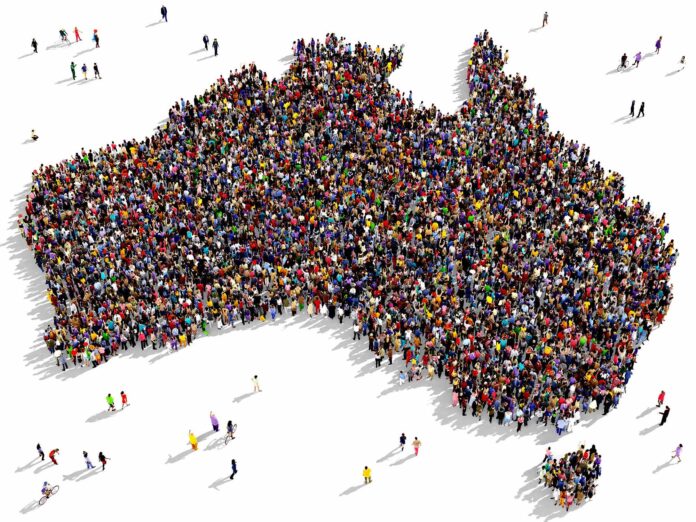[ad_1]
What lies ahead for Australia in the next 10 years?
Well, Simon Kuestenmacher highlighted a chart that is pivotal when forecasting the next ten years in Australia in his column in the New Daily.
Its simplicity belies its significance in understanding our nation’s future housing demands and consumption shifts.
It juxtaposed Australia’s current demographic profile by age against projections for the next decade.
This data, a blend of precision and prediction, comes from the Centre for Population – essentially, the demographers behind the Treasury’s budget numbers.
They meld their expertise with the latest findings from the Australian Bureau of Statistics, offering us an insight into the future.

Population predictions: more accurate than you’d think
According to Kuestenmacher, forecasting our nation’s population a decade ahead is surprisingly accurate.
We have a good grasp on birth rates and death rates, which are remarkably consistent.
The wildcard is migration, accounting for two-thirds of our population growth. While it’s trickier to predict, we set migration targets, so our estimates won’t be wildly off.
He highlighted one key point: about three-quarters of migrants are aged 18 to 39.
This means our forecasts for the over-50 population are especially reliable.
Variations, if any, will mostly affect those in their 20s and 30s.
Growths and shifts in the future
Kuestenmacher said that Australia’s population is set to swell by 14%, adding over 3.7 million people in the next decade– the equivalent of three cities the size of Adelaide.
By 2034, we’ll be a nation of 30.9 million, necessitating more resources in education, housing, healthcare, and entertainment.
Uneven age distribution
We’re looking at modest growth in the child population (0-17 years) at less than 6%, noted Kuestenmacher.
This implies a need for more, but not disproportionately more, childcare and educational facilities.
The young adult population (18-25 years), driven largely by international students, is expected to grow by 16%.
This demographic will significantly influence the demand for inner-city apartments and student accommodation.
Early career professionals (25-34 years)
Growing by 11%, this segment, according to Kuestenmacher is predominantly renters and not yet parents,
They will continue to seek housing close to city centres.
They’ll drive demand in the rental market, particularly for properties offering proximity to workplaces and urban amenities.

Millennials moving up
As Millennials move into the 34-51 age bracket, they’ll represent a key demographic in the housing market.
With their families growing, we’ll see increased demand for larger homes, particularly on the urban fringe, said Kuestenmacher.
This group will also drive demand for childcare services, given the high workforce participation of Millennial women.
The overlooked Gen Xers (52-64 years)
Experiencing a growth of just 6%, this group is in a unique position.
As parents of older children, they might be looking to upsize, but market conditions will dictate their ability to do so.

The booming elderly population
The most significant growth is in the 65+ age group, expanding by 29%, double the national average.
According to Kuestenmacher, this demographic shift will have vast implications, from increased demand in aged care to a surge in downsizing as Baby Boomers look to simplify their living arrangements.
The dramatic rise of the 85+ segment
A whopping 68% increase in this age group will see nearly a million Australians aged 85 or older by 2034.
This will have profound implications for healthcare, aged care, and other related industries.

In conclusion…
Kuestenmacher said that these demographic trends paint a clear picture of where Australia is headed.
From the densification of our inner suburbs to the changing demands in the housing market, we’re looking at a future that requires careful planning and strategic thinking.
Whether you’re an investor, a policymaker, or just someone interested in the future of our nation, these trends are crucial to understand.
[ad_2]
Source link


